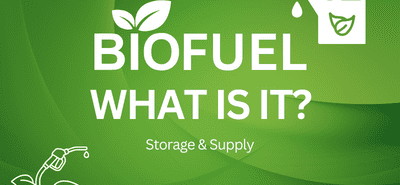The Ultimate Guide to Diesel Transfer Pumps
Diesel transfer pumps
Diesel transfer pumps are designed to refuel a range of diesel operated vehicles. These include:
- buses
- trucks
- coaches
- cars
- lorries
- plant equipment
- agricultural gear
Inside refuelling systems a diesel transfer pump is the part that moves liquid from one place to the desired location. They are used over an array of industries and are usually extremely adaptable in their application.

The Weights and Measures Act of 1985 is an essential requirement in which a diesel transfer pump must be approved before it is used in petrol stations and other selling environments. In addition, to be authorised to sell fuel the pump has to be considered precise enough to guarantee that the consumer receives 1 full litre of diesel when they pay for it. This is stated by the Measuring Equipment (Liquid Fuel and Lubricants) Regulations.
The selection of diesel transfer pumps that we supply are intended for businesses private use. For example, haulage companies or farmers refuelling their vehicles onsite rather than retail environments like petrol stations. It works out cheaper and easier for these types of businesses to buy diesel in bulk and refuel privately.
Which pump is best for me?
There are many different fuel transfer pumps available, most of them are flexible and can be used for a variety of things each one has different specifications and features that make each one more suitable for certain situations. It can be unclear to know which one is suitable for you unless you know precisely what you require. There are several factors that you may want to consider to determine which transfer pump is best for you. These are:
Do you need a complete fuel dispenser or just the pump
It is simple to determine if you require a single diesel fuel transfer pump, a replacement or a whole fuel transfer unit with a hose, nozzle and flow meter included. Users that want to buy an initial unit or would like to replace a full system would be better off with a complete fuel transfer unit. On the other hand, users who already have current refuelling systems a retrofit pump may be a suitable and cost effective option if the pump only needs replacing.
Flow rate required
The difference in flow rate is the speed of the fuel being dispensed. The higher the flow rate the quicker the fuel is being transferred. The flow rate is generally measured in litres per minute. To determine the required flow rate depends on the type of vehicle being refuelled, the general rule when choosing the correct rate is the larger the vehicle, the faster the pump needed to be able to fill it. For example, fuel transfer pumps for large vehicles like trucks and lorries usually have a flow rate of 50-70lpm. For standard cars and smaller vehicles usually have a flow rate of 40-45lpm. However, even larger vehicles like plant equipment or agricultural machinery may need a higher flow rate transfer pump as the fuel tank will be larger.
Power you have available
230v, 110v and 400v AC mains electricity supply are accessible for both individual pumps and fuel transfer units. Low voltage and DC inputs of 12v and 24v are also available. Consequently, making sure the power is available an important factor when choosing the right pump.
Fixed locations that have refuelling positions and immobile fuel tanks for the most part have mains power connected to them. Therefore, an electric fuel transfer pump would be the best option. Checking the voltage of the mains supply is important, most standard electric supplies are 230v, 110v. On most construction sites these are common as for industrial purposes 400v (three phase) or under is considered safe where substantial duty machinery is run.
On the other hand, when there are no fixed mains power supply a lower voltage diesel transfer pump is required. The lower voltage pumps are the DC 24v or 12v and are usually necessary in a remote location away from the main fuel supply. Cables and crocodile clips are supplied with the low voltage diesel transfer pumps to connect it to the vehicles battery. When away from the mains power supply, larger vehicles such as plant and agricultural equipment will require 24v power. Smaller machinery and vehicles a 12v power pump will be required.
What environment will it be used in
Another factor which has an impact on which diesel transfer pump is chosen is the environment which the refuelling happens. Today out on the the field, portable refuelling is of high demand. With quarries, construction sites and the agricultural market requiring 12v and 24v diesel transfer pumps. As this market is so popular there is a selection of pumps available which are sorted by higher flow rates and substantial duty construction.
Manual fuel hand pumps can be used when a small vehicle is being refuelled and when diesel is being transferred across drums. Only a small amount of fuel will need to be dispensed, consequently making it more cost effective to choose a manual fuel hand pump.
The way diesel transfer pumps are mounted and installed can also be different. An example of this is when a boxed or plated pumping kit is common for mounting to a wall or tank and is designed to be permanently static. There are diesel transfer pump kits specifically designed for drum mounting which include connectors and down tubes. These are used when the fuel is kept in a drum instead of a tank.
For pumping jobs that need to be done in zoned area the pump needs to be explosion proof. These pumps carry an ATEX approval or CE approval stamp. For more info on this type of pump and whether you need an ATEX approved pump please see our guide to the ATEX directive and ATEX equipment.










